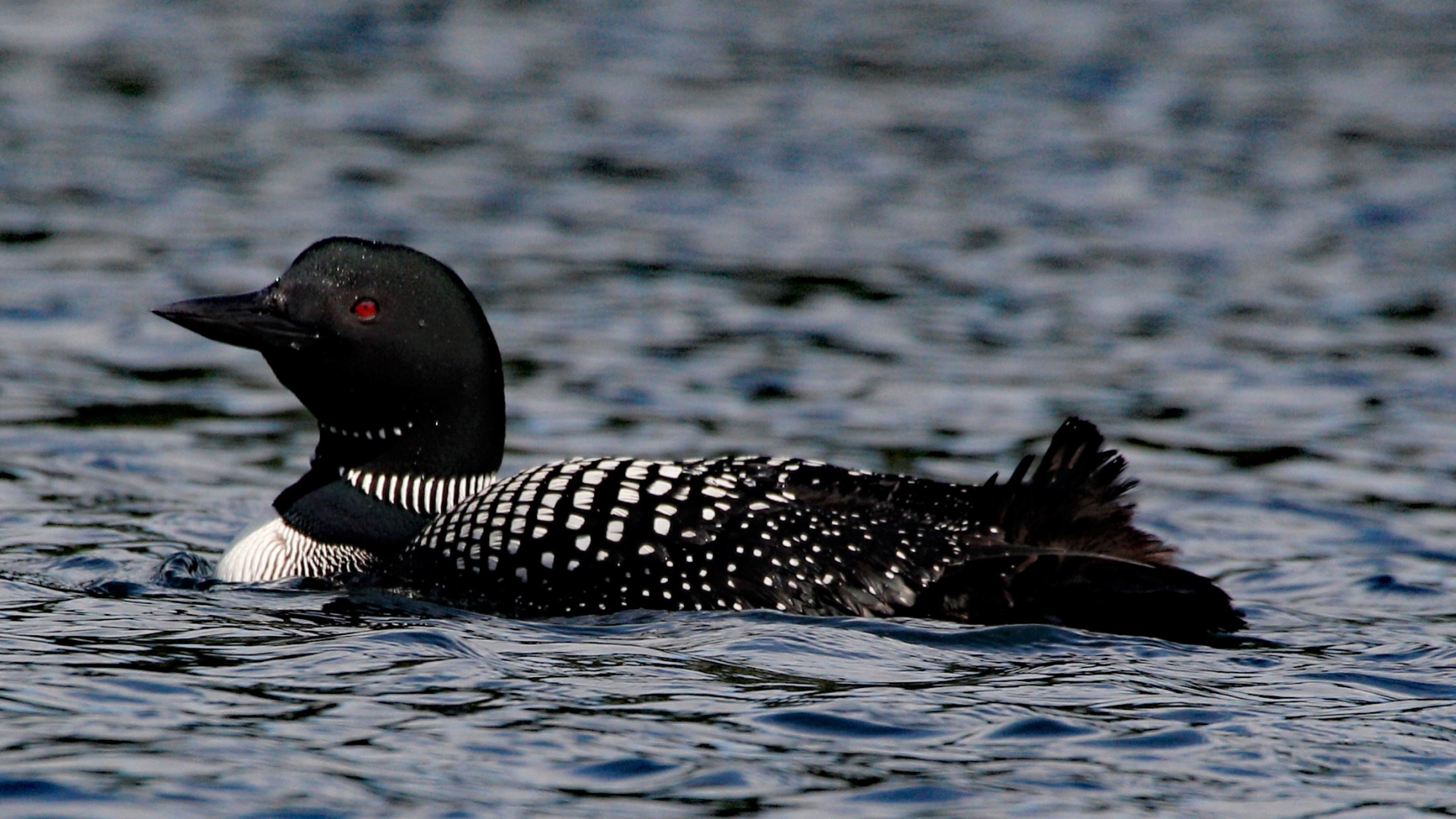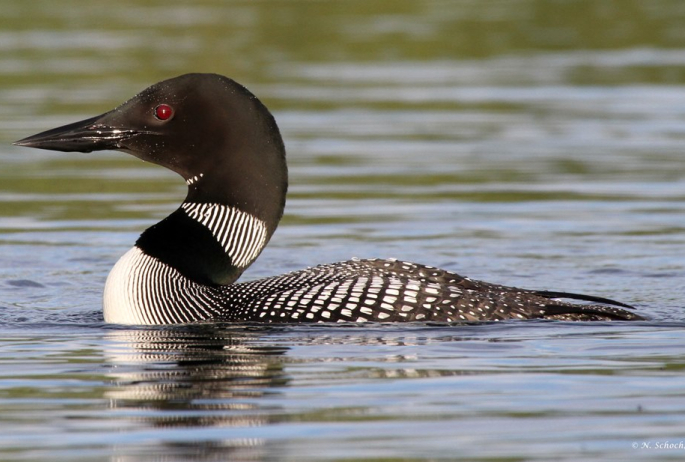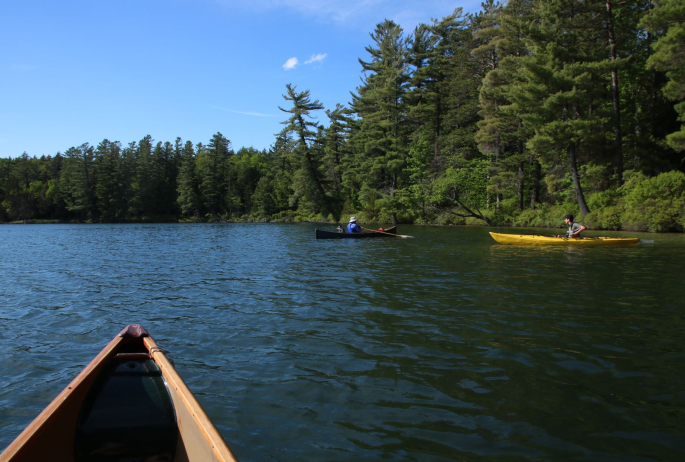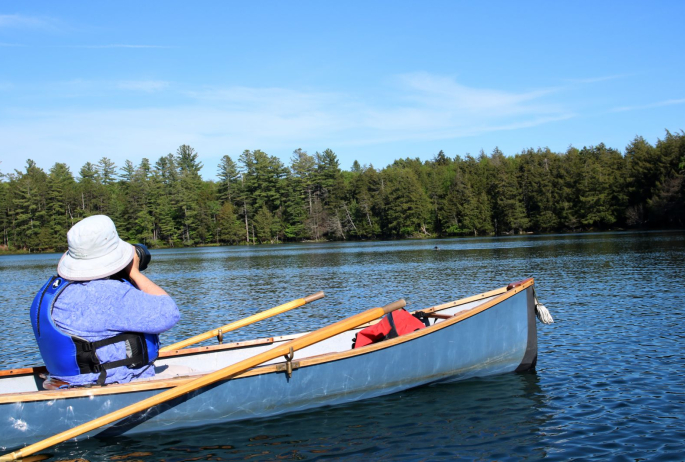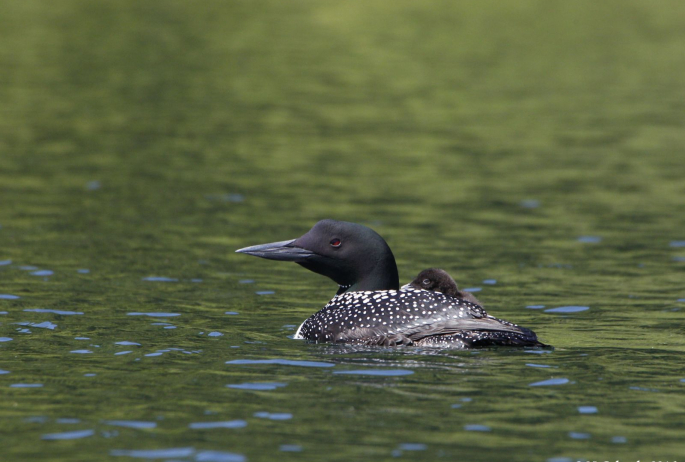Summer evenings in the Adirondacks wouldn’t be the same without the haunting wail of common loons. The nighttime crescendo is usually a surprise to first-time visitors because nothing sounds quite like it. There’s the crackling of the fire, the lapping of waves upon the rocky shoreline, the chirps and grunts of various frogs, and then a hollow, low tone cuts through it all, rising in pitch to a high note that echoes off the nearby mountains as it fades into the valleys.
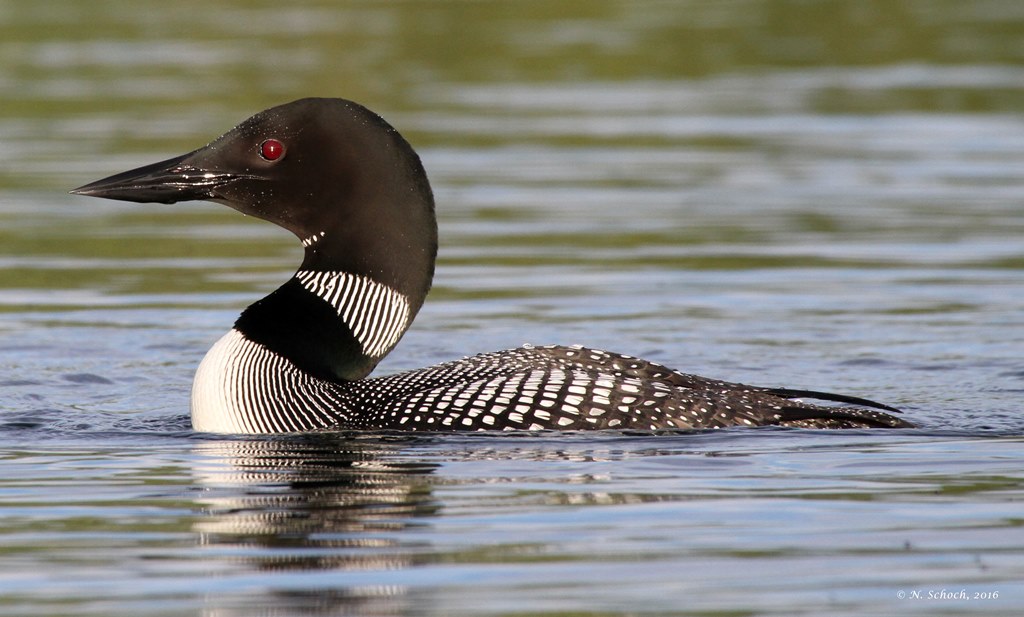
A home for all things loon-related
Loons are iconic to this region, so much that anything that can have a loon on it probably has at some point. Paintings, T-shirts, clocks, chairs, bedsheets — they’ve all been looned. But there’s more to this strange bird than its distinct look and haunting calls, and the good people with the Adirondack Center for Loon Conservation, located in downtown Saranac Lake, can tell you all about it. Three parts education and one part quirky gift shop, the center is the kind of place that aims to educate and engage.
“Loons are a charismatic animal, so they’re a great way to teach people about the environment,” Nina said. “They draw people in, then you can talk about environmental concerns that affect habitats, people, and other wildlife.”
The Adirondack Center for Loon Conservation is a must-do if you’re in the area, especially if paddling or camping are on your itinerary. Pay them a visit before heading out, then hit the water and go see some loons! I recently did just that when I joined the loon center’s Executive Director Nina Schoch on a paddle in the St. Regis Canoe Area, an 18,400-acre tract that’s heaven on earth if you’re into paddling, fishing, or sleeping under the stars.
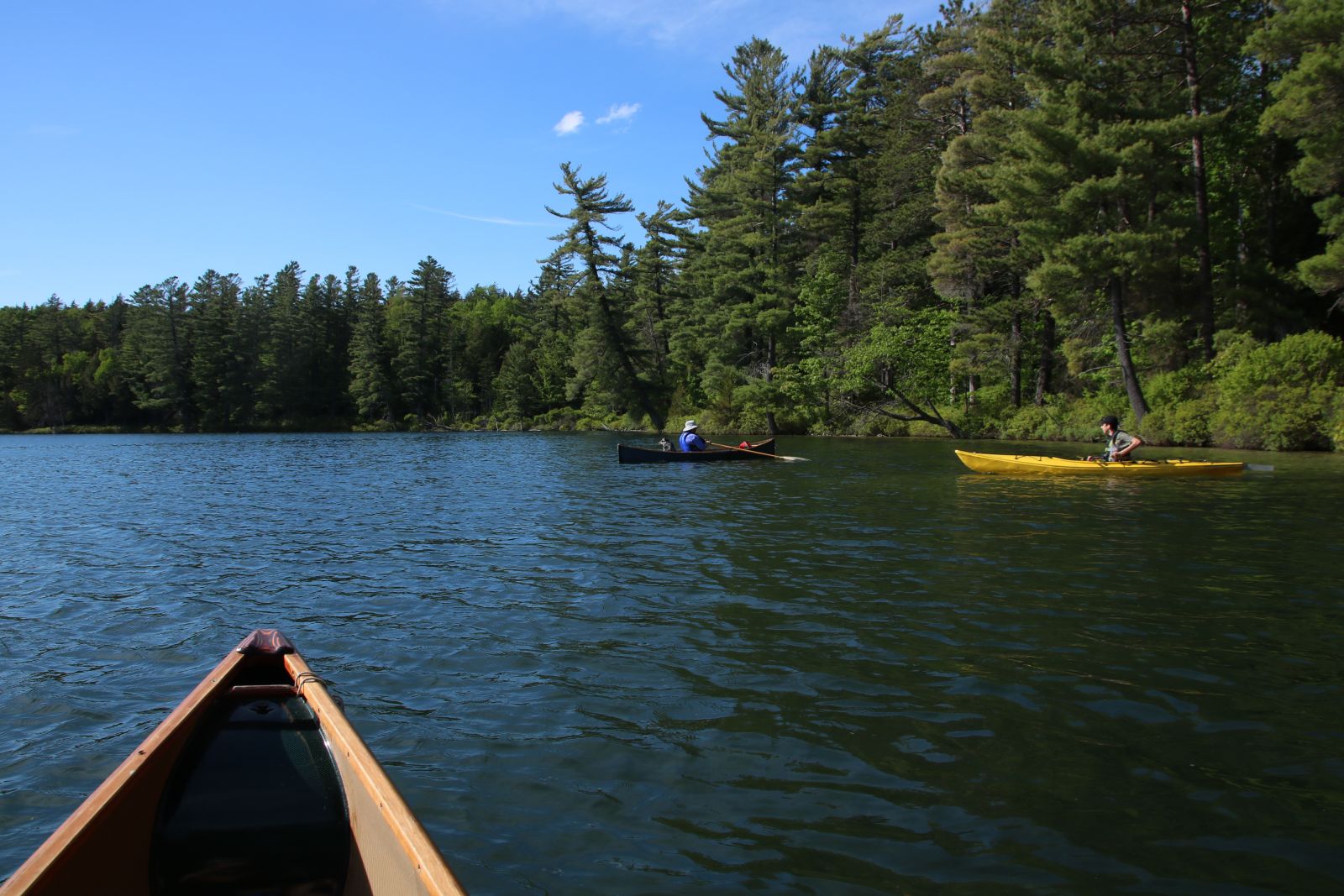
A good loon is easy to find
Nina and I headed to Little Green Pond on a sunny weekday afternoon, and considering the sunny weather and the gorgeous location, I was surprised that we had the pond to ourselves. Well, we almost had it to ourselves — a loon was bobbing upon the gentle waves just offshore from the boat launch.
As we prepared our gear, I asked Nina about loon conservation and what made her want to study these animals, and she explained that loons are not only cool animals — more on that in a bit — but they’re also great indicators of what’s going on in aquatic ecosystems. Loons are a top predator in the Adirondack food web, so any chemicals contained in the creatures they eat are inevitably passed on to them. Of particular interest to Nina is mercury, which is deposited through acid rain. The Adirondacks has a long and troubled history with acid rain, but the good news is loons have helped show us that mercury's presence seems to be decreasing.
Out on the water, I followed Nina as she paddled toward the opposite shore of the pond. It didn’t take long to spot a loon pair, and that’s when Nina said that people should resist the urge to get to close to animals. Instead, paddlers can get a better vantage point by employing patience. Slowly drift in the bird’s general direction and let the animal get used to your presence. With a little luck, one will pop up close to your boat after a dive.
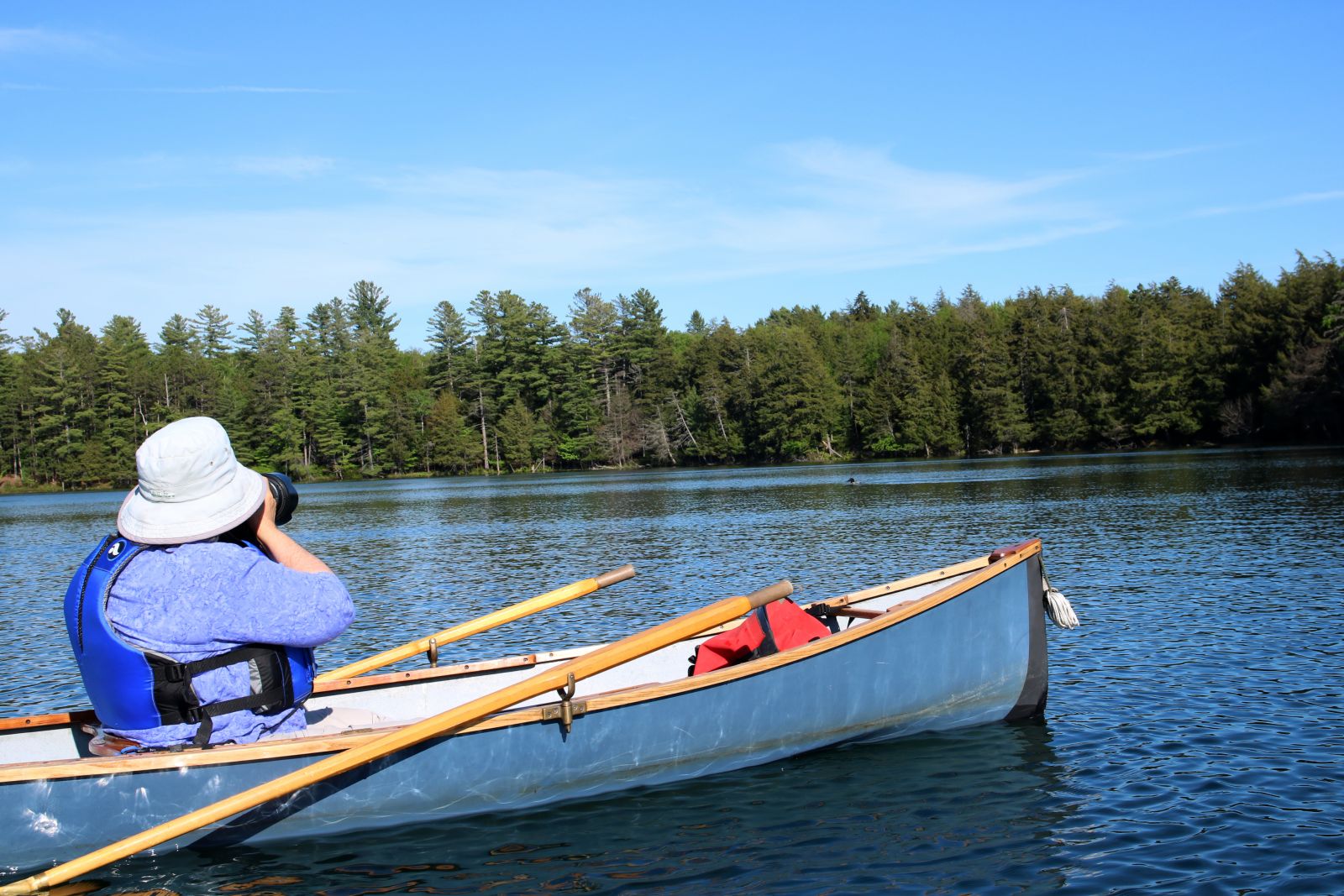
As we watched our loons dive and reappear Nina explained that they have territories, and the size of the waterbody determines how many loons will nest there. Little Green Pond is a one territory pond while its neighbor, the large L-shaped Little Clear Pond, is big enough for three territories.
There’s a complex social dynamic to loon relationships lurking behind each territory, and Nina keeps tabs on that too. Males fend off other males, groups of loons will congregate with other birds in the middle of larger waterbodies, and loon partners sometimes leave each other for other mates. One year on Little Clear Pond, one male loon’s partner left him for a new male arrival, and the newly single loon was chased off.
It’s not all about chasing other loons away, though. They are social animals, and they’ll even congregate in massive groups of sixty to a hundred birds in the fall. I tried to imagine that scene as we wrapped up our leisurely paddle on Little Green Pond. Nina’s right, they are cool birds, and being in their presence is a magical experience, something that the Adirondacks would not be the same without.
How to visit loons
- Never approach a loon on a nest because it can startle the animal, causing it to accidentally kick eggs out of the nest as it flees.
- Keep our waters and shorelines clean! Loons and other animals can be killed by discarded fishing line.
- Discarded lures are bad, but lead lures are particularly bad because they can cause lead poisoning if ingested.
- Know the sounds loons make and what they mean.
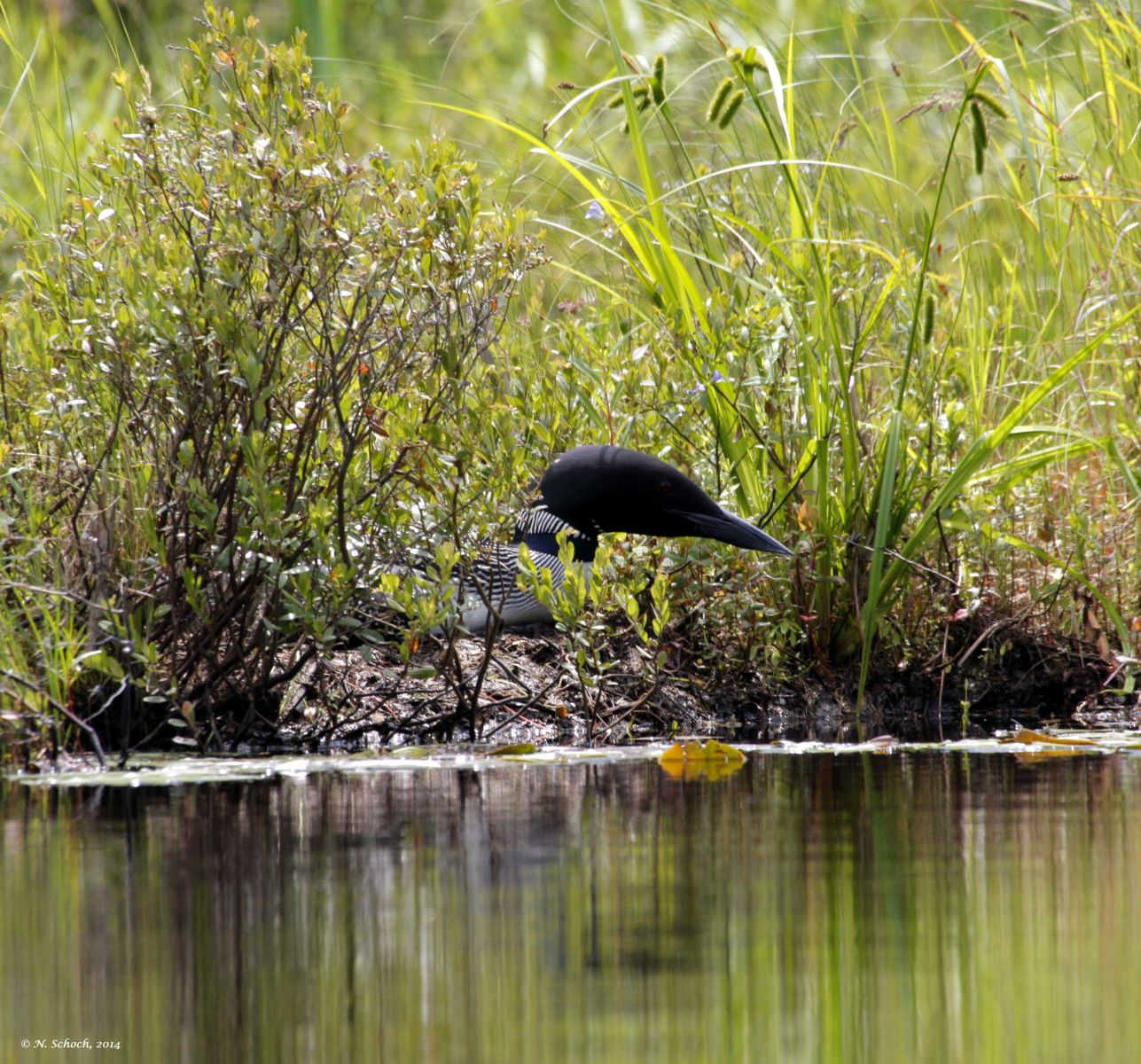
The language of loons
- Hoot: A short sound used to communicate. If you are near a loon and it’s making this noise, back away. You are bothering it!
- Tremelo: Agitation or distress call. Loons also make this sound while they’re flying.
- Wail: Used to announce where they are.
- Yodel: Male loons make this sound when they are distressed. Large birds of prey like bald eagles can inspire them to yodel, as can people.
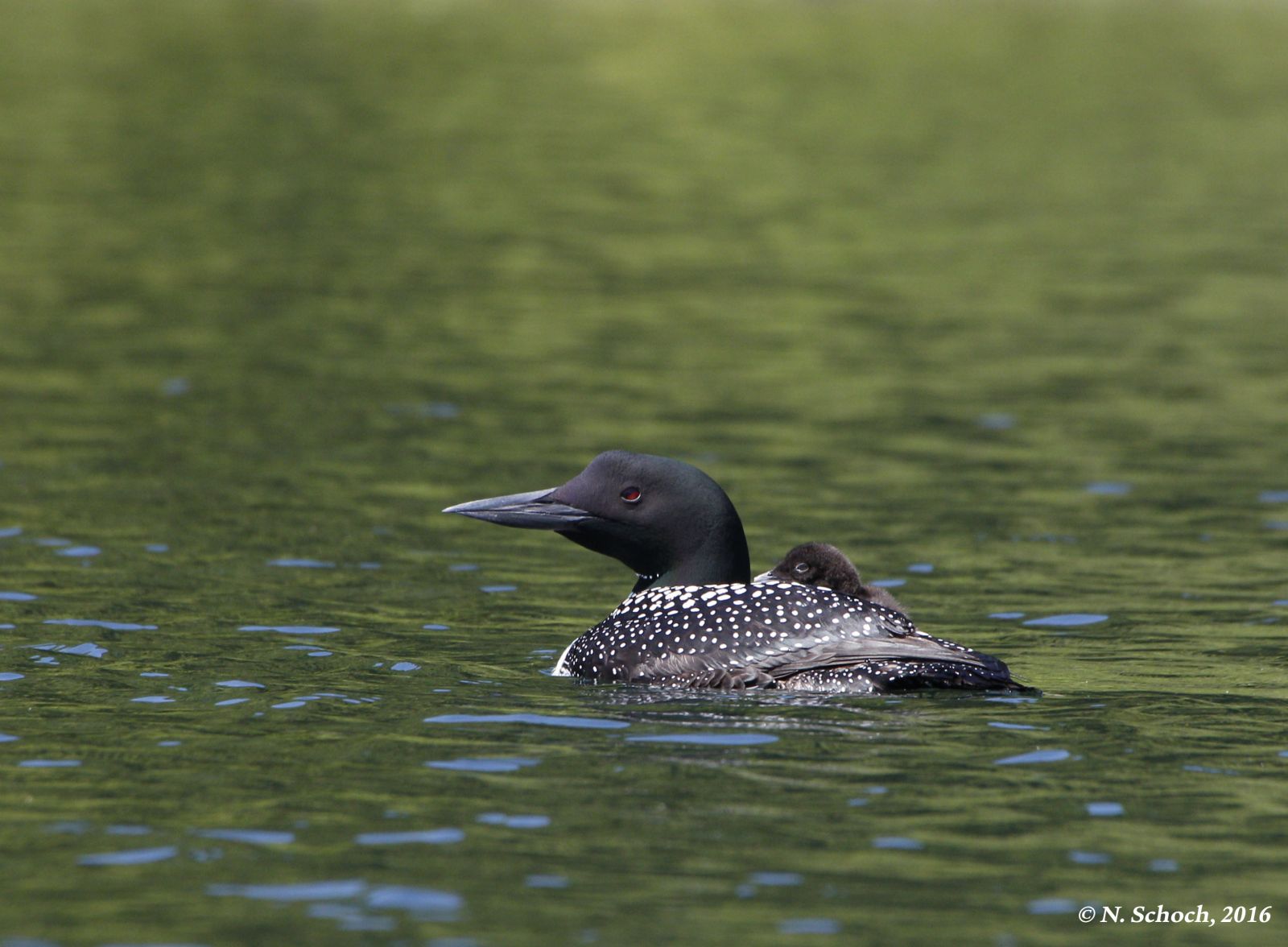
Other loon facts
- Males do a “penguin dance” on the water when they’re fighting or extremely agitated.
- During the summer breeding season, loons are black and white and their eyes are red. Their feathers turn gray and their eyes turn brown in the winter.
- Loons migrate in the winter and return to the Adirondacks to breed. Nina said loons banded by the Adirondack Center for Loon Conservation have been reported as far away as North Carolina.
- Loons can live to be 30 years old.
- Loons only nest when they’re breeding.
- Loons are very involved in raising their young. The chicks will even ride on the adults’ backs!
- Loons sleep on the water.
- Males and females have the same markings, but males are a little bigger.
The Adirondack Center for Loon Conservation is one of many things that makes our downtown decidedly different. Head into town after your paddle and enjoy dining, shopping, art, and live music.
